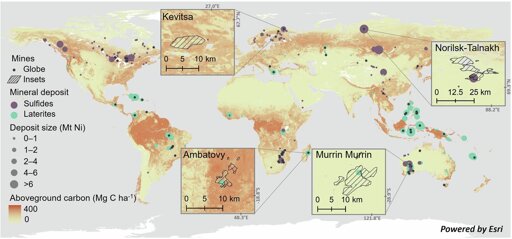Nickel is commonly used in renewable energy infrastructure, such as in batteries and corrosion-resistant steel, and demand is expected to double by 2050 to support low-carbon technologies," Dr. Mervine said.
"However, the biomass carbon emissions from vegetation clearing for nickel mines are almost always overlooked in carbon accounting, sustainability reports, and sourcing decisions.
Dr. Evelyn Mervine from UQ’s School of the Environment analyzed data from 481 international nickel mine sites and undeveloped deposits and found the land footprint of nickel mining could be four to 500 times greater than previously reported.
You must log in or register to comment.


